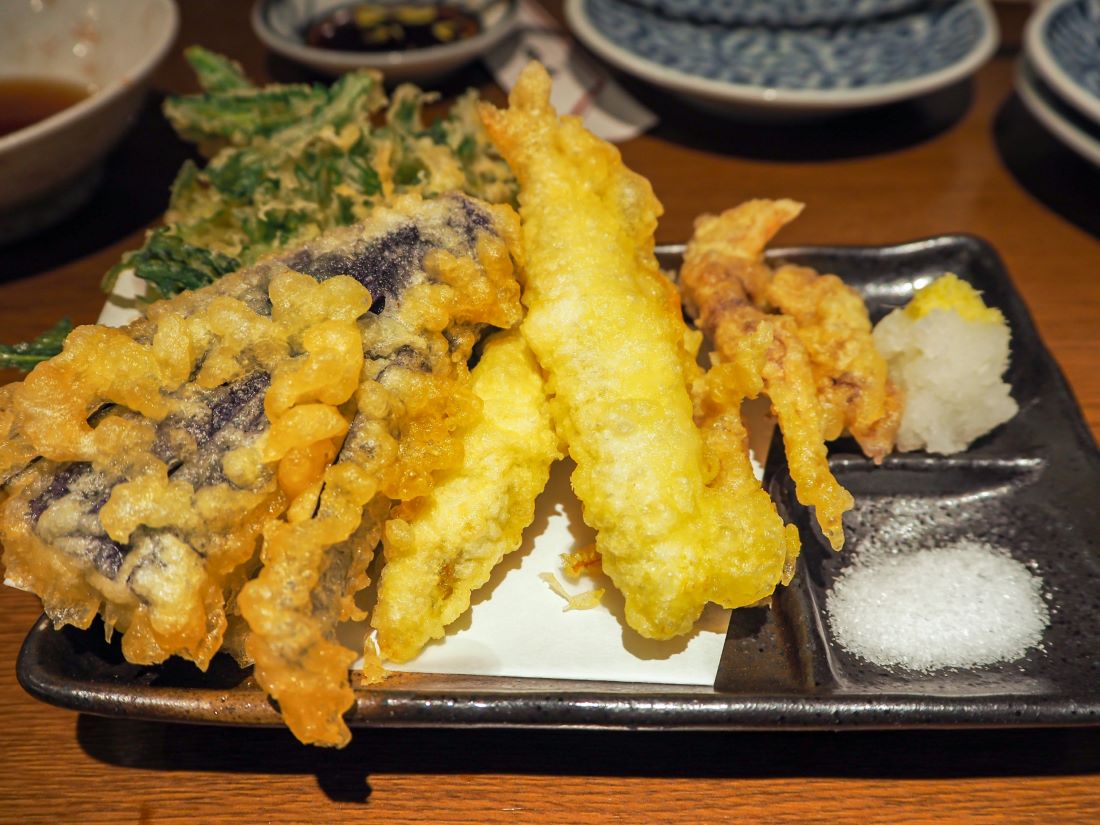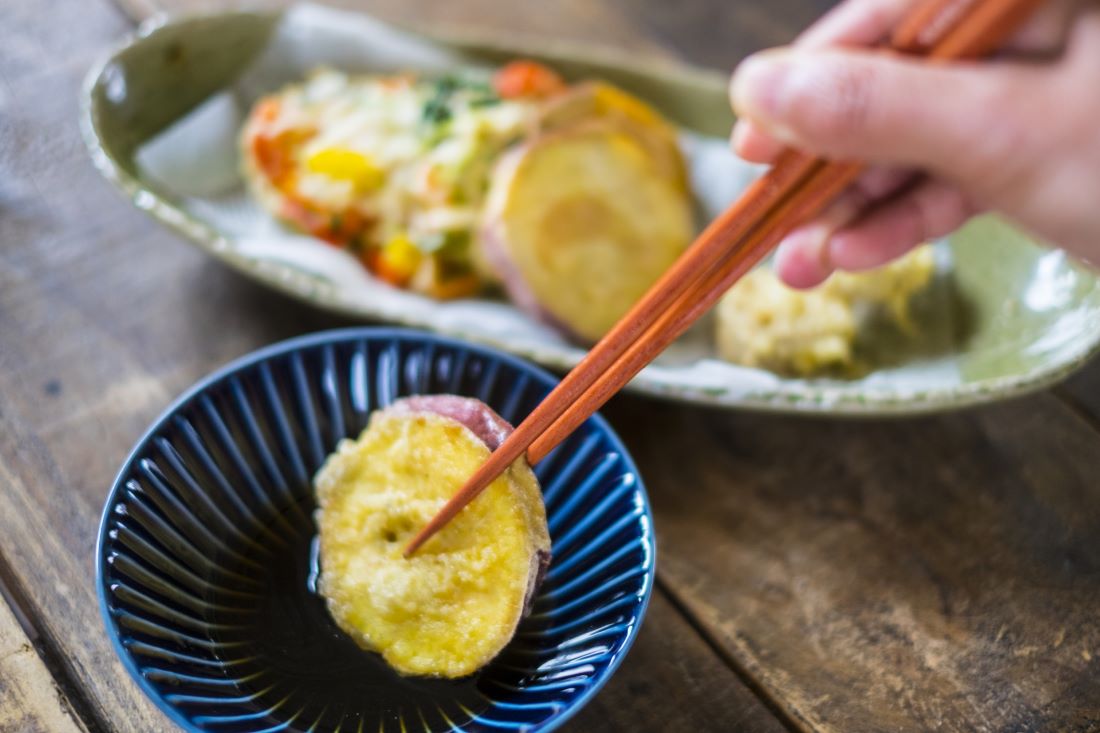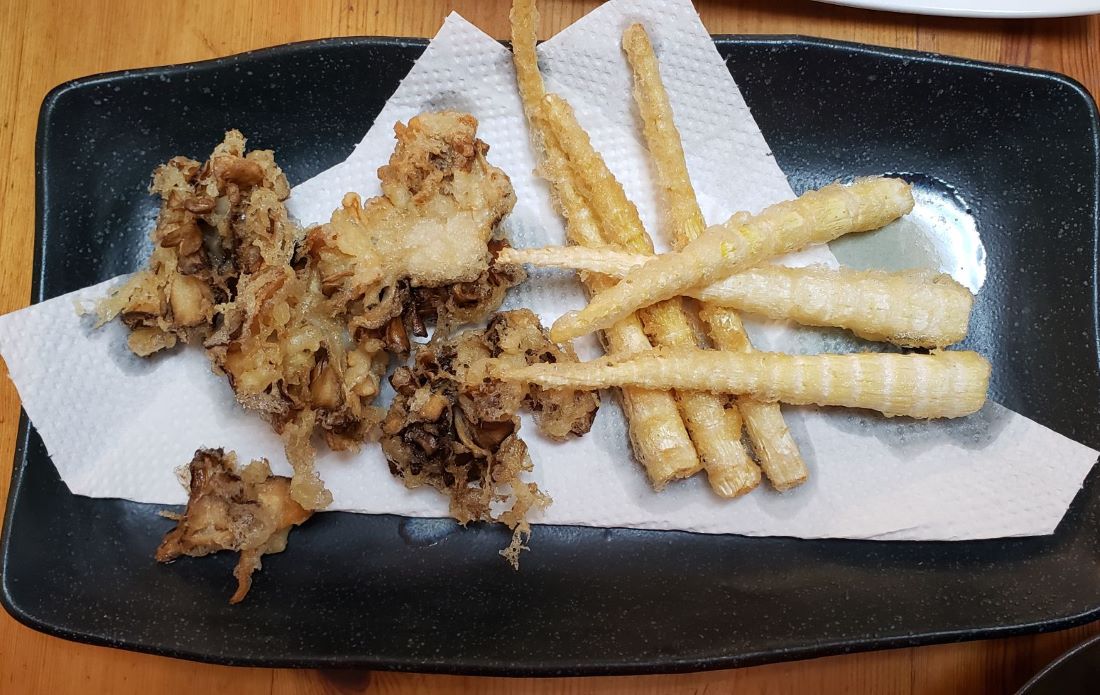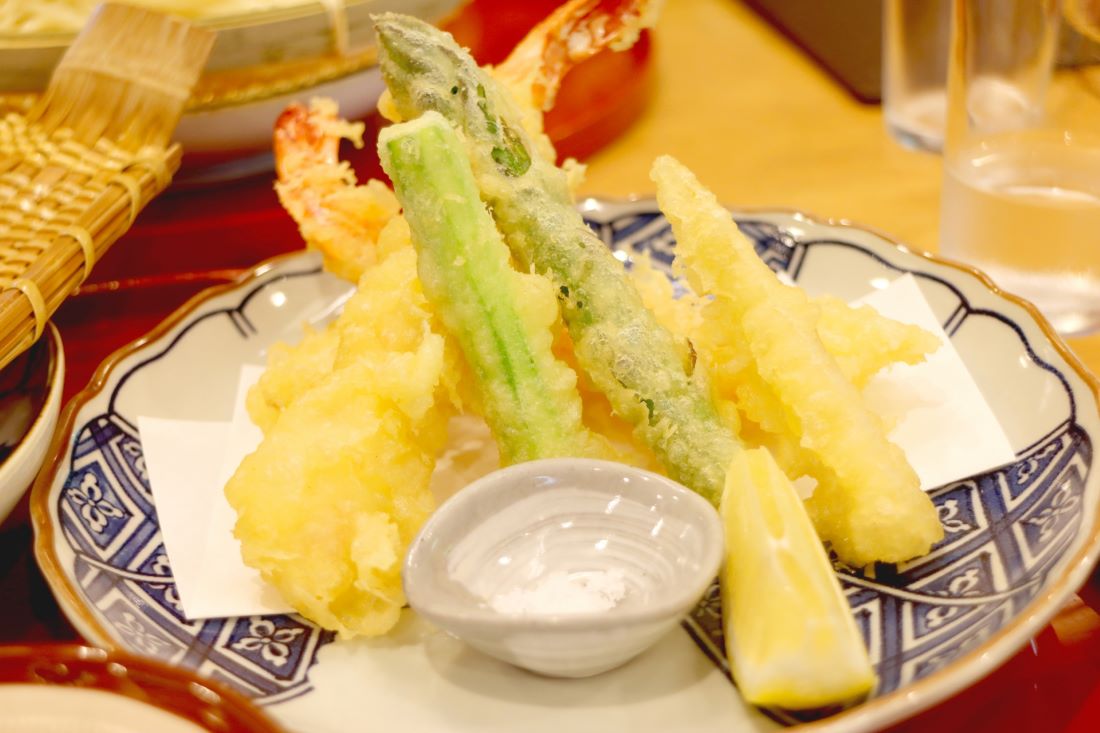Tempura is a popular Japanese dish that has gained worldwide recognition recently. It consists of battered and deep-fried seafood, vegetables, and meat and is known for its crispy and light texture, which is achieved by using a specific batter and frying technique.

It is believed to have originated in the 16th century when Portuguese missionaries introduced batter-fried food to Japan. The dish quickly gained popularity and evolved into what we know today as tempura. The dish is now a staple in Japanese cuisine and is enjoyed by people all over the world.
Tempura is typically served with a dipping sauce called tentsuyu, which is made from dashi, soy sauce, and mirin.

The dish can be enjoyed as an appetizer or as a main course and is often served in Japanese restaurants. Its popularity has also led to the creation of new variations of the dish, such as vegetable tempura and shrimp tempura.
History

The history of tempura dates back to the 16th century, when Portuguese missionaries arrived in Japan. They brought with them a technique for frying food that involved coating it in a batter made from flour and eggs. The Japanese adapted this technique to create tempura.
The word “tempura” comes from the Portuguese word “tempero,” which means seasoning. The Japanese added their own seasonings to the batter, such as soy sauce and mirin, a sweet rice wine. They also used a variety of ingredients for the filling, including shrimp, squid, fish, and vegetables.
Tempura became popular in Japan during the Edo period, which lasted from 1603 to 1868. It was originally a dish that was only eaten by the wealthy, but it eventually became more widely available. Today, tempura is a popular dish in Japan and around the world. It is often served in restaurants as an appetizer or main course.
It has also influenced other cuisines around the world. In the United States, for example, it is often served in Japanese restaurants as a side dish or appetizer. It has also been adapted to other cuisines, such as Korean and Chinese, where it is often served with a spicy dipping sauce.
Ingredients

Tempura consists of seafood or vegetables that are battered and deep-fried to perfection. The dish is known for its light and crispy texture, making it a favorite among foodies worldwide. The ingredients used in tempura are simple, but they must be of high quality to ensure the best possible outcome.
The primary ingredient in tempura batter is wheat flour, which is mixed with ice-cold water or carbonated water to create a light and airy batter. The batter should be mixed just enough to combine the ingredients, leaving some lumps to create a crispy texture when fried.
Another essential ingredient in tempura is oil. The oil used for frying should have a high smoke point to prevent burning and imparting unwanted flavors. The most commonly used oils in tempura are vegetable oil, canola oil, and peanut oil.
When it comes to the seafood and vegetables used in tempura, the possibilities are endless. Shrimp, squid, and scallops are popular seafood options, while vegetables like sweet potato, eggplant, and zucchini are also commonly used. It’s essential to choose fresh and high-quality ingredients to ensure the best possible flavor and texture.
Lastly, dipping sauces are an essential part of enjoying tempura. The most common dipping sauce is tentsuyu, which is made with dashi, soy sauce, and mirin. Other popular dipping sauces include grated daikon radish with soy sauce and ponzu sauce, which is made with citrus juice and soy sauce.
Preparation

While it may seem simple to make, there are a few key steps that are essential for achieving the perfect tempura batter. Here’s what you need to know:
Ingredients: The batter for tempura is made from a combination of flour, cornstarch, baking powder, and ice-cold water. It’s important to use ice-cold water to ensure that the batter stays light and crispy. The ingredients should be mixed together until they form a smooth and thin batter.
Preparation: Before you start making the batter, it’s important to prepare your ingredients. Vegetables and seafood should be cut into small pieces and patted dry with a paper towel to remove any excess moisture. This will help the batter adhere to the ingredients better. It’s also a good idea to chill the ingredients in the refrigerator before dipping them in the batter.
Frying: To fry the tempura, heat a large pot of oil to 375°F. Dip the ingredients in the batter and gently place them in the hot oil. Be careful not to overcrowd the pot, as this can cause the temperature of the oil to drop and result in soggy tempura. Fry the ingredients until they are golden brown, then remove them from the oil and place them on a paper towel to drain any excess oil.
Serving: Tempura is traditionally served with a dipping sauce made from dashi, soy sauce, and mirin. It’s also common to serve tempura with grated daikon radish and grated ginger. Tempura can be enjoyed as an appetizer or as a main course with rice and miso soup.
By following these simple steps, you’ll be able to make delicious and crispy tempura that will impress your friends and family. Just remember to use ice-cold water, prepare your ingredients properly, and fry the tempura in small batches to ensure that it stays crispy.
Variations

Tempura can be adapted to suit different tastes and dietary requirements. Here are some popular variations:
- Vegetable tempura: This is a popular variation that uses a variety of vegetables, such as sweet potato, eggplant, and bell pepper, instead of seafood or meat. It’s a great option for vegetarians and vegans.
- Shrimp and vegetable tempura: This variation combines shrimp and vegetables, such as zucchini and onion, for a delicious and satisfying meal.
- Chicken tempura: Chicken can be used instead of seafood for those who prefer a meat option. It’s often served with a dipping sauce, such as sweet and sour or teriyaki sauce.
- Tempura sushi: This is a popular variation where tempura-battered ingredients, such as shrimp or vegetables, are used to make sushi rolls.
Another variation of tempura is the dipping sauce. While traditional tempura is served with a simple dipping sauce made of soy sauce, mirin, and dashi, there are other sauces that can be used to add flavor and depth to the dish. Some popular dipping sauces include:
| Sauce | Ingredients |
|---|---|
| Tentsuyu | Soy sauce, mirin, dashi, and sugar |
| Ponzu | Soy sauce, citrus juice, and vinegar |
| Tempura sauce | Soy sauce, mirin, dashi, and grated daikon radish |
Experiment with different variations and dipping sauces to find your favorite way to enjoy tempura!
Serving
Tempura is a dish that is best served hot and crispy, straight out of the fryer. It is traditionally served with a variety of dipping sauces, including soy sauce, grated daikon radish, and a mixture of soy sauce and grated ginger.
When serving tempura, it is important to keep the batter crispy by not overcrowding the serving dish. It is best to serve tempura on a wire rack or a plate lined with paper towels to absorb excess oil.
Ita can be served as an appetizer or a main course. It is often paired with a bowl of steaming hot rice and miso soup, making for a satisfying meal.
For a more formal presentation, tempura can be served on a platter with a variety of dipping sauces and garnishes. Some popular garnishes include grated daikon radish, shiso leaves, and lemon wedges.
When serving tempura, it is important to eat it while it is still hot and crispy. If left to sit for too long, the batter will become soggy and lose its texture. So, enjoy it while it’s fresh!
Tips and Tricks
While tempura may seem like a simple dish, there are a few tips and tricks that can take your tempura game to the next level.
Temperature is Key
The temperature of your oil is crucial when making tempura. If the oil is too hot, your batter will burn before the inside of your food is cooked. If the oil is too cold, your tempura will be greasy and heavy. The ideal temperature for frying tempura is between 340°F and 360°F (170°C and 180°C). Use a thermometer to ensure that your oil stays within this range.
Keep Your Batter Cold
It’s important to keep your batter cold while you’re working with it. This will help your tempura stay light and crispy. You can achieve this by placing your batter bowl in a larger bowl filled with ice. You can also add ice cubes directly to your batter to keep it cold.
Use the Right Tools
When making tempura, it’s important to use the right tools. Use chopsticks or tongs to dip your food in the batter and gently place it in the oil. Avoid overcrowding the pan, as this can cause the oil temperature to drop and result in greasy, heavy tempura. Use a slotted spoon or a wire mesh strainer to remove your tempura from the oil and drain it on a wire rack or paper towels.
Experiment with Different Ingredients
While shrimp and vegetables are the most common ingredients used in tempura, don’t be afraid to experiment with different foods. Try using fish, chicken, or even fruit. You can also add spices or herbs to your batter to give your tempura a unique flavor.
Don’t Overmix Your Batter
When making tempura batter, it’s important not to overmix it. Overmixing will activate the gluten in the flour and result in a heavy, doughy batter. Mix your batter gently and only until it’s just combined.
The Sum Up

One of the best things about tempura is that it is incredibly versatile. You can use almost any type of vegetable or seafood to make this dish, and it will still taste amazing. From shrimp and squid to zucchini and sweet potato, the possibilities are endless.
Another great thing about tempura is that it is relatively easy to make at home. With just a few simple ingredients and some basic cooking skills, you can create a restaurant-quality dish in the comfort of your own kitchen. And if you don’t feel like cooking, you can always head to your local Japanese restaurant and order some tempura off the menu.
Overall, tempura is a dish that is sure to please anyone who tries it. Whether you are a fan of Japanese cuisine or just looking for something new to try, tempura is definitely worth a try. So why not give it a go and see what all the fuss is about?




